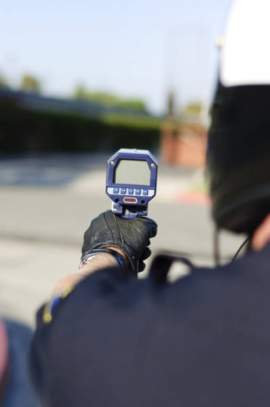
What to Know About Texting While Driving

What is Texting While Driving?
Texting while driving is the action of writing text messages, sending text messages, reading text messages, reading email, or making similar use of the web and connection features on a mobile phone while controlling operating a motor vehicle. The act of texting while driving has been looked at by many authorities as a dangerous one. Texting while driving has also been ruled many times as the cause of many motor vehicle accidents, and because of this, texting while driving has restricted or outlawed in certain jurisdictions. Texting while driving leads to an increase of distraction behind the wheel.
A study conducted in 2006 by Liberty Mutual Insurance Group which included over than 900 teens from more than 26 high schools across the country showed that 37 percent of students found that texting while to was "very" or "extremely" distracting. Another study by the American Automobile Association found that 46 percent of teen drivers admitted to being distracted while driving due to texting.
Although talking on a cellular phone while driving a vehicle is considered very dangerous, the threat of this really became a large issue when texting was first introduced. Since the year 2000, texting on mobile devices has very quickly become a social norm, as most cell phone plans provide a text messaging plan. There has also been a significant increase in smart phone sales with the growing popularity of iPhone, Blackberry, and Android phones, which allows people to easily communicate while they are doing almost anything.
The dilemma at this point is finding a point where safety becomes a bigger concern over convenience. Many different studies have shown texting while driving to be the cause of different life-threatening accidents because of the driver’s distraction. The International Telecommunication Union made a statement saying that making calls, making calls, and other interaction with communication systems while driving is a very serious source of driver distraction which increases the chance of traffic accidents.
There was an experiment in 2009 with Eddie Alterman, Car and Driver magazine editor, which took place at a deserted air strip. The experiment showed that texting while driving greatly greater impacted safety while driving than driving drunk. When Alterman was put in a legally drunk state, his stopping distance from 70 mph went up by 4 feet. However, when he was reading an e-mail, 36 feet was added to his stopping distance, while sending a text added 70 feet to it at 70 mph.
United States Texting While Driving Laws
Texting while driving is a big problem in the United States and has been outlawed or will soon be outlawed for all drivers in many states including: Arkansas, California, Connecticut, Colorado, Delaware, Georgia, Illinois, Iowa, Indiana, Louisiana, Maryland, Michigan, Massachusetts, Minnesota, Nevada, New Jersey, New Hampshire, North Carolina, New York, Oregon, Tennessee, Utah, Virginia, Vermont, Washington, Wyoming and Wisconsin. In the state of Texas, the law prevents school bus drivers from texting while driving when transporting a child who is under the age of 17. In many other states including Indiana, Kansas, Missouri, Mississippi, Texas, Nebraska, and West Virginia, there are laws that apply to underage drivers or drivers with learner's permits which makes it illegal for them to text while driving. Other laws enacted by Kentucky in 2010 and by Indiana in 2011 banned all texting while driving for all drivers, as well as all cell phone usage by all vehicle drivers under the age of 18. The latter portion of the law is very unusual in that drivers with unrestricted licenses are still subject to the cell phone ban. Many states that have banned the use of mobile phone by young drivers only apply their laws to holders of graduated or restricted licenses.
In the state of Florida, a proposed bill called "Heather's Law" would entirely ban all cell phone use and texting while driving. Heather’s Law was inspired by the death of Heather Hurd, who had been killed in an accident supposedly caused by a truck driver who drove and crashed into ten cars while he was texting while driving.
On October 1, 2009, the United States Department of Transportation announced that President Barack Obama would be signing an Executive Order which directed federal employees to not engage in texting while driving government-owned vehicles, along with other activities. According to the Department of Transportation Secretary Ray Lahood, the order sent a very clear message to the American public saying that that distracted driving is incredibly dangerous and completely unacceptable.
This executive order shows that the federal government was trying to lead by example. As a part of a bigger move to combat texting while driving and distracted driving, the National Highway Traffic Safety Administration Department of Transportation along with the Department of Transportation launched a public information website called distraction.gov.On January 26, 2010, the United States Department of Transportation also announced a federal ban on texting while driving by bus drivers and trucks.
Criticisms of Texting While Driving Bans
One common argument against texting while driving bans is that it texting can be safe and helpful under certain circumstances. For example, if a driver is stuck in a traffic jam, he or she can safely send a text message in order to reschedule an appointment. Additionally, there are some products available commercially that suppress the use of cell phone screens and keyboards, which prohibits emailing texting, or web browsing. Some other products also allow calls to be made using in-vehicle Bluetooth connections or other hands free mobile devices in order to reduce the risks of distracted driving.
Another argument against these texting while driving bans is regarding the wording of these bans. Instead of placing a ban on the act of reading or writing a text, which can distract a person, texting while driving laws usually bans the act of sending a text message and does not specifically discuss how the messages are created. With advanced voice recognition technology, text messages can be made both eyes and hands free, without needing to engage in the act of writing or reading.
Notable Texting While Driving Crashes
• August 29, 2007: Danny Oates was killed by a driver of a car who was allegedly texting while driving. The defense argued that the driver Jeffrey Woods may have suffered a seizure during the accident.
• January 3, 2008: Heather Leigh Hurd died in a crash caused by a truck driver who allegedly had been texting while driving. Russell Hurd, her father, has been supporting a law in various states called Heather's Law, which would prohibit texting while driving.
• September 12, 2008: The Chatsworth train collision killed 25 people. The blame for the accident was placed on the operator who was sending text messages while conducting the train.
• May 2009: The MBTA Green Line of the Boston area of the MBTA crashed while the 24-year-old driver was texting while driving the train. The crash resulted in 46 people injured and had an estimated cost of $9.6 million.
NEXT: Texting While Driving Statistics




















